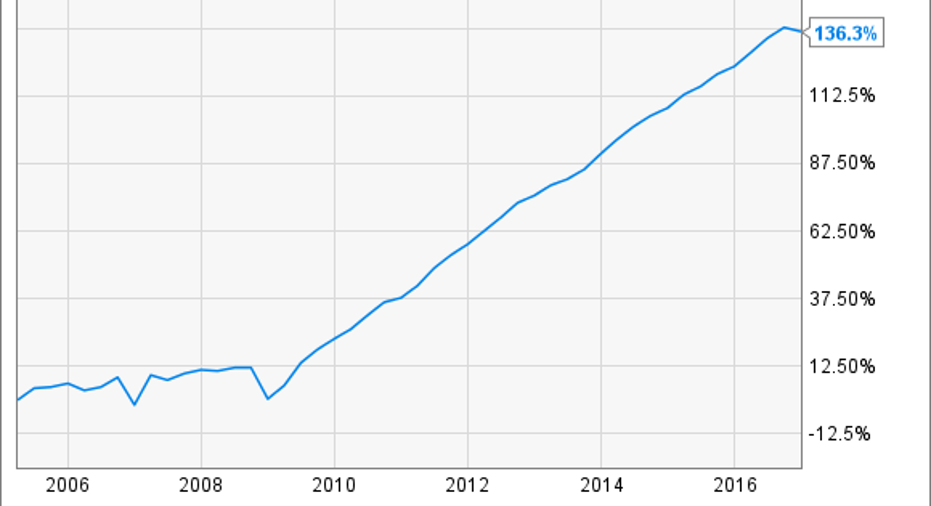U.S. Bancorp: The Antifragile Bank

In the book Antifragile, author Nassim Taleb talks about organizations that gain strength in times of crisis and chaos. He calls them antifragile -- thus the title.
Taleb wasn't talking about banks per se, but his point about antifragility captures the core quality of the best-run banks.
U.S. Bancorp (NYSE: USB) offers a case in point.
The following graph shows the trend in U.S. Bancorp's book value per share, the ultimate measure of value when it comes to bank stocks. Take a glance at it, and then I'll walk you through what matters.
USB Book Value (Per Share) data by YCharts.
Notice how the slope of the line since the 2008-09 financial crisis is steeper than the slope of the line in the years leading up to it? This means U.S. Bancorp's book value per share has grown at a faster rate each year since the crisis than it did before then.
A handful of other banks gained from the crisis as well -- such as PNC Financial, Wells Fargo, and JPMorgan Chase -- but most banks were lucky to survive it and have spent the years since then retreating and retrenching and thus relinquishing market share to the likes of U.S. Bancorp.
Far from being a negative event in the Minneapolis-based bank's history, then, the crisis served as a potent catalyst that's allowed U.S. Bancorp to widen its competitive advantage over its peers.
Consider this: In the five years before the crisis, U.S. Bancorp's return on equity exceeded the average bank on the KBW Bank Index by 35%. Over the past five years, the margin was 69% -- nearly doubling from before the crisis.
That's what you call an antifragile bank.
The U.S. Bancorp building looms over Old Town in Portland, Ore. Image source: Getty Images.
It's also why U.S. Bancorp's stock trades for the second highest valuation on the KBW Bank Index, which tracks shares of two dozen large-cap banks. The only big bank stock with a higher valuation is Bank of New York Mellon, a massive custodial bank based in New York City.
U.S. Bancorp trades for 3.2 times tangible book value, according to YCharts.com. That may be less than BNY Mellon's 3.4 times tangible book, but it's 50% higher than the average on the large-cap bank index.
This seems expensive only if you've forgotten U.S. Bancorp's performance over the past decade. Once that's factored into the equation, it's clear that you get what you pay for when buying its shares.
10 stocks we like better than US BancorpWhen investing geniuses David and Tom Gardner have a stock tip, it can pay to listen. After all, the newsletter they have run for over a decade, Motley Fool Stock Advisor, has tripled the market.*
David and Tom just revealed what they believe are the 10 best stocks for investors to buy right now... and US Bancorp wasn't one of them! That's right -- they think these 10 stocks are even better buys.
Click here to learn about these picks!
*Stock Advisor returns as of February 6, 2017
John Maxfield owns shares of US Bancorp and Wells Fargo. The Motley Fool has no position in any of the stocks mentioned. The Motley Fool has a disclosure policy.



















